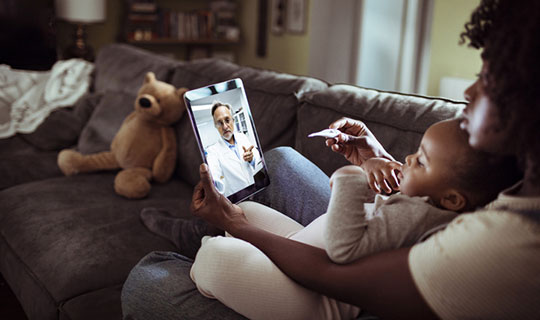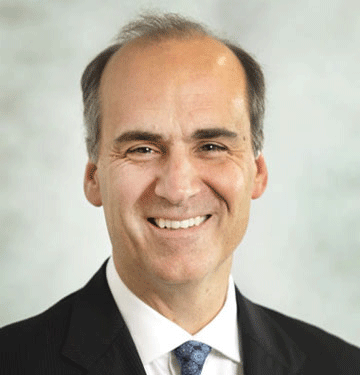Virtual Visits Won’t Replace In-Person Appointments, but They Can Provide Significant Benefits
 Not long ago, virtual doctor visits—appointments conducted via video or phone—were relatively rare. Now they’re commonplace, and they’re here to stay.
Not long ago, virtual doctor visits—appointments conducted via video or phone—were relatively rare. Now they’re commonplace, and they’re here to stay.
“The pandemic gave telehealth a jump-start, but I believe it will become a permanent part of the health care delivery system,” says Andy Anderson, MD, President and Chief Executive Officer of the combined medical group of RWJBarnabas Health and Rutgers Health. “We are seeing ever-increasing use of our RWJBarnabas Health TeleMed services.”
Telehealth can be used for primary and routine medical care, as well as for some aspects of specialty care.
 “There’s still enormous value in face-to-face appointments and physical examinations, and that will never go away,” says Dr. Anderson. “But telehealth has many uses, both for convenience and for making and maintaining the doctor-patient connection.” Here, he explains why.
“There’s still enormous value in face-to-face appointments and physical examinations, and that will never go away,” says Dr. Anderson. “But telehealth has many uses, both for convenience and for making and maintaining the doctor-patient connection.” Here, he explains why.
Can a wellness visit be done through telehealth?
A good deal of preventive screening can be done this way. A doctor can ask, “Have you had your mammogram? Have you scheduled your colonoscopy? What kind of diet are you consuming? Are you sleeping well?”
Patients can self-report their weight and, if they have a blood pressure cuff at home—as many patients do—their blood pressure numbers. A doctor can screen for cognitive issues, give referrals, advise on a plan for self-care, and recommend future tests and appointments.
Telehealth is not, clearly, a full substitute for an in-person visit and examination. But it is a valuable way for people to get many of their health care needs met.
Besides wellness visits, what other kinds of primary care can be conducted virtually?
If you have an acute issue—for example, a cut or sprain, or a possible urinary tract infection—telehealth is a way to sort out the next steps, such as a doctor's office visit, trip to urgent care, or a prescription.
Also, aspects of care for chronic conditions like diabetes, heart failure, and high blood pressure can be managed via telehealth. A doctor can ask about blood sugar levels, symptoms, and medication side effects. The physician can see certain symptoms over the video, such as swelling in the legs.
Chronic disease management should be done in a combination of in-person and telehealth visits. But many patients have been very happy to have routine check-ins take place in a video visit, sparing them the time they’d have to spend traveling to the doctor’s office.
When an in-person visit isn’t practical, why not just have a telephone call?
We encourage a video visit whenever possible, and fortunately, the technology for having one has become very simple to use. There’s a huge visual component to communication—body language, expression. It’s important to see the patient and have them see you when you’re counseling or coaching them, or asking about side effects.
Are there any special issues for children?
For kids, much of their preventive care has to do with getting vaccines on schedule, so they’ll need in-person visits more than most adults.
Can telehealth be used for COVID-19 screening?
Absolutely. In fact, it’s a very important screening tool because, ideally, you don’t want a person to show up to a medical office and potentially expose other people. Initial screening can be done effectively over the phone or via a video call by asking about the patient’s health history and symptoms. Then prescriptions, tests, or other next steps can be arranged as needed. The same is true, by the way, for people who have a bad cold or the flu.
To learn more about RWJBarnabas Health TeleMed®, call 888.724.7123 or visit www.rwjbh.org/telemed.